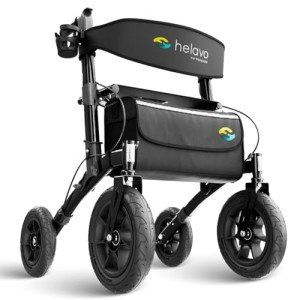How The 10 Worst Innovative Walker Design FAILS Of All Time Could Have Been Prevented
Innovative Walker Design: A Leap Towards Enhanced Mobility
As the global population ages, the demand for reliable mobility services has ended up being progressively pushing. Traditional walkers, while functional, are often criticized for being troublesome and lacking design innovation. However, a wave of innovation has actually infiltrated the market, coming up with modern walker designs that not just deal with the physical needs of users however also stress design, ergonomics, and technology. This blog site post checks out these groundbreaking walker styles, their features, and how they are boosting the self-reliance of people with mobility obstacles.
The Evolution of Walker Design
Historic Perspective
Walkers have actually come a long way since their creation in the early 20th century. Initially created as easy metal frames, these mobility aids saw gradual improvements over the decades. As awareness about ergonomics and user convenience increased, designers started presenting features that better suited the unique requirements of seniors and individuals with impairments.
Current Trends
Recently, innovative walker designs have utilized technology, ergonomics, and modern visual appeals. Below are some of the key features that are transforming the walker landscape:
Feature
Description
Advantage
Lightweight Materials
Use of materials like aluminum and composite polymers
Much easier to maneuver and transport
Adjustable Height
Adjustable dimensions for each user
Boosted convenience and suitability
Compact Design
Folds for easy storage and mobility
Convenience for users on the go
Integrated Technology
Features like wise sensors and GPS
Improved safety and navigation
Stylish Aesthetics
Color choices and stylish styles
Increases user confidence and desirability
Innovative Features of Modern Walkers
1. Ergonomic Design
Current walker models focus on ergonomics, guaranteeing that the height, deal with grip, and total shape cater to the user's convenience. For example, curved deals with or hand grips made from soft, slip-resistant materials help in reducing stress on the wrists and hands throughout usage.
2. Smart Technology
A notable trend in walker design is the integration of clever technology. Some modern walkers come geared up with sensors that signal caregivers or relative if the user falls or displays signs of distress. In addition, built-in GPS technology allows users to browse unfamiliar terrains safely.
3. Multi-Functional Capabilities
Innovative walkers now offer extra performance beyond just assisting with mobility. Some designs include built-in seats, storage baskets, and even cup holders. This multi-functional approach permits users to rest when required and carry necessary products, consequently promoting self-reliance.
4. Adjustable Features
The ability to personalize a walker to fit individual requirements has actually ended up being a substantial selling point. Adjustable frames, colorful attachments, and other customizable aspects permit users to have a walker that feels uniquely theirs.
5. Wheel Options
Some walkers now feature different wheel choices, including bigger wheels for rough surface or smaller ones for flat surface areas. This flexibility ensures that users can navigate different environments without feeling unsteady or unpleasant.
Benefits and drawbacks of Innovative Walkers
While the improvements in walker design bring various advantages, it's necessary to think about both the advantages and drawbacks.
Pros
Cons
Increased security and stability
Potential for greater expenses
Greater user convenience and usability
Some features may be unneeded for all users
Stylish design options enhancing user morale
Technology can be intimidating for some users
Improved portability and storage choices
Upkeep of advanced technology might be needed
Frequently Asked Questions (FAQs)
Q1: Are innovative walkers more pricey than standard walkers?
A1: Yes, innovative walkers frequently include greater price due to their advanced features and materials. Nevertheless, the financial investment may be rewarding for the included safety, convenience, and self-reliance they offer.
Q2: How do I pick the right walker for my needs?
A2: When picking a walker, consider your daily activities, physical abilities, and any particular requirements you might have (such as storage or technology). Trying why not try these out in-store can help you discover one that feels comfortable.
Q3: Are there walkers designed specifically for seniors?
A3: Many modern walkers cater particularly to the needs of seniors, featuring lightweight materials, ergonomic designs, and easy-to-use performances that boost functionality.
Q4: Can walkers be used outdoors?
A4: Absolutely! Lots of innovative walkers included larger wheels fit for outdoor terrains, making it much easier for users to navigate parks, pathways, and uneven ground.
Q5: Do walkers require much upkeep?
A5: Maintenance requires vary by design. Fundamental cleaning and occasional look at wheels and mechanisms are usually enough. Technically advanced walkers may need software updates or battery replacements for sensing units.
The innovative walker designs presently emerging in the market are a testimony to the creative approaches being taken to enhance mobility aids. These walkers not just serve their essential function however also enhance the user's quality of life by integrating security, functionality, and aesthetics into their design. As we continue to welcome these advancements, it's crucial for users and caretakers alike to stay notified about their options, guaranteeing that people keep their independence and delight in the freedom of movement.
With technology continuing to evolve, the future of walker design appears brilliant, promising enhanced services for mobility that accommodate an ever-growing requirement for inclusivity and user-centered design.
